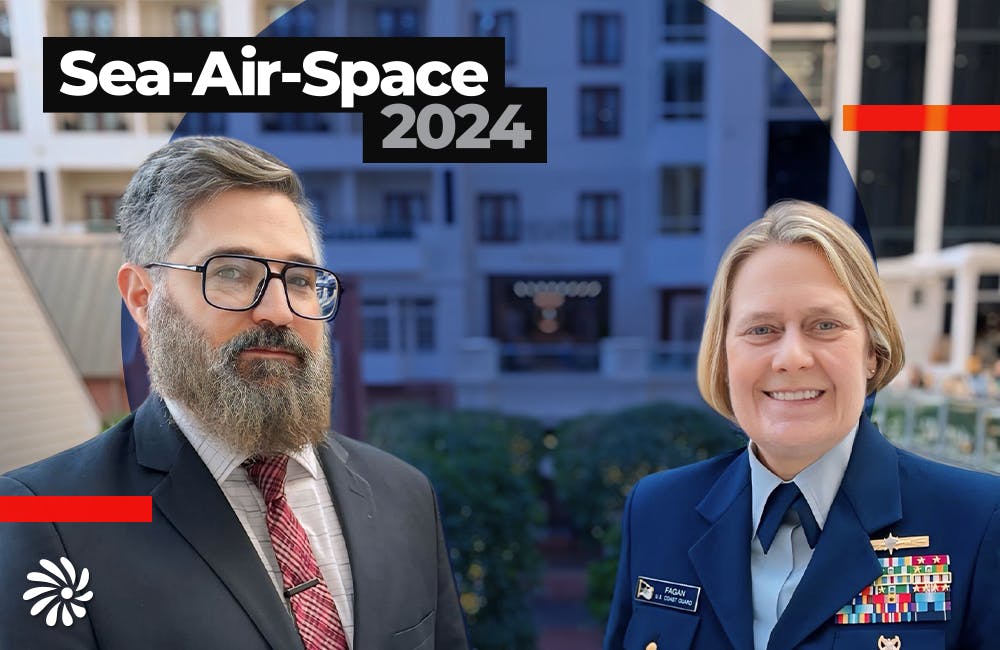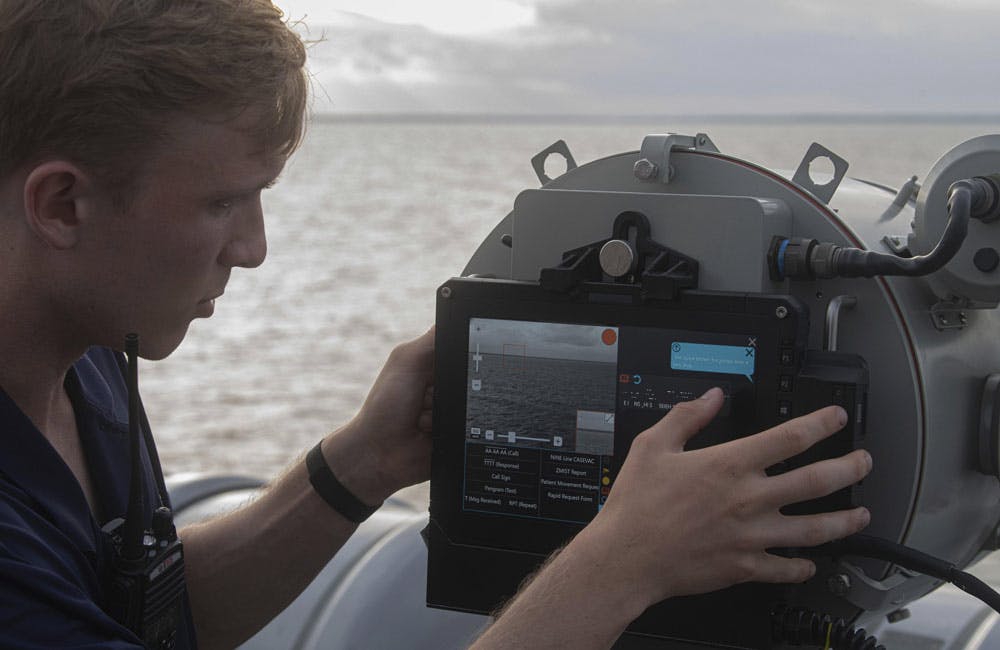How IRS is Leveraging AI-Driven Technology in Procurement
The agency is considering human-centered design in its solutions that cut down manual labor and time.

Amid the challenges that federal officials have faced in harnessing the power of data to create automated solutions to support their agencies’ missions, the Internal Revenue Service has made recent significant advances in creating effective artificial intelligence solutions and strategies that have improved procurement processes.
The agency’s procurement office has recently created two new teams to further advance innovation in data and AI, said Special Assistant Mitch Winans, who works in the agency’s Office of the Chief Procurement Officer. Looking across the procurement organization, Winans identified how his team could better support the 400 or so procurement employees’ experiences and drive better efficiencies into their work by leveraging tools and technologies.
“We really try to focus on what’s our problem set or what are we trying to accomplish with the problem that we’re trying to solve, and then take a back-end approach,” Winans said, adding that his team is looking at ways to adopt and integrate technologies like robotic process automation and artificial intelligence into operations.
One AI solution that Winans and his team successfully launched is for standard compliance checks processes known as contract responsibility determinations — a security background check required for every federal procurement organization that verifies whether companies are suitable for doing business with government agencies.
Contract responsibility determinations involve checking whether companies vying for contracts are suspended or debarred, are in compliance with laws or executive orders, have adequate financial resources or other requirements. This is typically a significantly time-consuming, manual and redundant process, making it a prime candidate for his team to find an automated solution to expedite the workflow, Winans said.
“Depending on the employee and the scenario, that can take an employee up to two to three hours to complete one of those responsibility determinations manually,” Winans said. His team then identified candidates that would benefit from a potential tool to speed that up. “We were able to develop and deploy an automation tool or a bot that can automate that entire process end-to-end in about five minutes.”
With the success of one AI-driven project, Winans said he is currently working on another solution called the DATA Act Improvements Project. The DATA Act requires that agencies report on financial and non-financial data in awards contracts. There are 57 different data elements that the IRS’s contracting office has to report on, and meeting those reporting requirements is another highly time-consuming process.
Like the contract responsibility determinations solution, the DATA Act Improvements project aims to reduce the manual, time-consuming tasks of data-element reporting, while also sharpening the accuracy of the data employees submit.
“Sometimes there’s disparities because there’s contract rating systems, financial management systems, all involved and feeding into the [Federal Procurement Data System],” he said. “Then we’re also trying to limit the amount of manual rework required by our employees to improve the accuracy and quality of that data.”
Human-centered design is taking a front seat throughout all the IRS’s AI projects, Winans said, and the agency is taking into account employee feedback across any project.
Furthermore, Winans said that the IRS procurement office takes the time to train employees to optimally utilize the AI and automated tools built for them to keep staff prepared for the changes that different solutions will bring to their work.
“Making sure that the workforce is properly equipped and trained and educated about these types of new tools is really critical,” Winans said. “I think one thing that we’re committed to in our leadership, both inside and out, is helping spread awareness and creating more familiarity and comfort with these technologies with our workforce.”
Winans considers a focus on workforce issues one of several best practices around AI. Not only is empowering end users through training key, but also ensuring that teams have robust data scientists and analysts. In this effort, Winans said he supports the Office of Personnel and Management’s current effort to create a job series for federal data scientists.
While federal agencies work to build a more robust data science and AI-ready workforce, engaging with industry to continue the interest and momentum around AI in the federal space is critical.
“We have to partner with industry to better understand capabilities — what are the best practices, where are the use cases, what are the different technical approaches and contract models and present models for this — and then thinking about all those other things beyond the workforce and making sure we’re having those meaningful conversations together so that we can partner together as a solution to help us support our mission and employees in a better way,” Winans said.
The IRS’s procurement office isn’t waiting to advance AI and technological innovation in light of limited federal data specialists, however. It has created two new teams to consolidate preexisting data experts within his organization to further carve the path forward in AI.
The first team is a procurement innovation branch, which will focus on new procurement methods and approaches, incorporating lessons learned and fostering a culture of innovation within the IRS procurement organization. This team, more specifically, aims to identify best practices in acquisitions, marketing research and requirements documents, and will also engage with industry and academia to cement solutions forward.
The second team is a data analytics and technology branch, which will leverage procurement data within the IRS to set the stage for the development of more AI and automated solutions.
“How do we use all that procurement data that’s out there to gain operational insights? How do we use that to make more impactful results and use that to streamline processes, as well as looking at different types of technology?” Winans said.
As the IRS procurement office builds up these two teams, Winans hopes to explore and create automated solutions to help aid pre-award activities, market research, contract document uploading processes and award-closing or contract close-out work.
Winans’ team is also exploring the benefits that chatbots can bring to the procurement workforce. From informational chatbots to help guide users within a website, to transactional chatbots that can create accounts or check ticket statuses, to advisory chatbots that use machine learning and natural language processing to give advice, Winans and the new teams his organization has formed hope to continue driving improvements and efficiencies across the agency.
This is a carousel with manually rotating slides. Use Next and Previous buttons to navigate or jump to a slide with the slide dots
-

How Agencies are Upskilling the Workforce in AI
Federal officials are putting in place new training and education methods to ensure its overall workforce understands the technology.
3m read -

Sea-Air-Space: Coast Guard Prioritizes Agility in the Face of Technological Change
Adm. Linda Fagan says the modern Coast Guard is to adjusting to the speed of technology.
10m watch -

AI Needs Strong Structures to Develop User Trust, Leaders Say
AI’s potential can only truly be met when guardrails and culture are in place, according to defense officials.
5m read -

Sea-Air-Space: Navy Sees Promise in Autonomy
The Navy is examining potential use cases for artificial intelligence within robots and other autonomous systems.
9m watch








